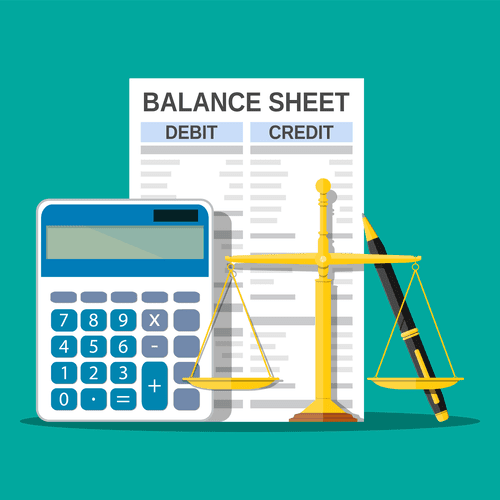
A company with a higher equity multiplier is more leveraged than a company with a lower equity multiplier. The equity multiplier is a great way to calculate the value of an equity investment. It is calculated by dividing the company’s valuation by the number of shares you own. High equity multiplier is a high risk indicator the equity multiplier is equal to since the company is more reliant on debt financing. Equity multiplier is a useful tool for assessing a company’s financial leverage.
- A low equity multiplier implies a relatively small amount of debt (as the share of assets financed by shareholders’ equity is relatively high).
- Financial ratios allow you to learn more about several areas of a business.
- In other words, it shows how much of a company’s assets are financed by debt.
- Despite its limitations, the asset to equity ratio is a useful tool for assessing a company’s financial leverage.
- The company’s financial strategy aims to balance debt and equity financing to support its growth initiatives while maintaining financial stability.
- It basically tells them that the company has more of its own money deployed in acquiring assets, rather than taking out loans to do so.
Equity Multiplier Formula
- 1) To increase the equity multiplier through increasing debt, a company can take on more debt.
- Low equity multiplier is a low risk indicator, since the company is more reliant on equity financing.
- Differences in business models mean that higher financial leverage does not necessarily indicate superior financial health.
- This equation shows that a higher equity multiplier, through increased financial leverage, can significantly boost ROE, assuming profit margins and asset turnover remain constant.
- Meanwhile, Verizon’s telecommunications business model is similar to utility companies, which have stable, predictable cash flows and typically carry high debt levels.
However, there is bound to be a certain debt component; when that happens, the equity multiplier ratio rises up. This ratio indicates the extent to which a company’s assets are financed by shareholders’ equity versus debt. A higher equity multiplier means more assets are funded by debt, which increases financial leverage. Equity multiplier equation gives the stakeholders an idea about how the company has funded its assets. If the ratio is high, it would signify that the proportion of debt is higher as compared to equity and a lower ratio would indicate a higher proportion of equity. The debt obligation and the pressure of loan repayment will eat away the earnings if the business is not strategically planned to manage its finances in an optimum way.

The Role of the Equity Multiplier in the DuPont Analysis
Equity multiplier (also called leverage ratio or financial leverage ratio) is the ratio of total assets of a company to its shareholders equity. A high equity multiplier means that the company’s capital structure is more leveraged i.e. it has more debt. As a key performance indicator of the financial leverage of a company, the equity multiplier ratio holds immense importance in guiding investors with their decisions. This number helps understand the portion of a company’s ventures funded through debt and shareholders’ equity. The equity multiplier compares the company’s total assets with the firm’s shareholders’ equity.
- Both the above concepts refer to financial ratios that are widely used in the financial market to assess the capital structure in the form of proportion of debt and equity.
- In this case, company DEF is preferred to company ABC because it does not owe as much money and therefore carries less risk.
- But still, in order to evaluate the financial health of the business, it is always a good idea to use them in conjunction r combination with other ratios and measures.
- After almost a decade of experience in public accounting, he created MyAccountingCourse.com to help people learn accounting & finance, pass the CPA exam, and start their career.
- The equity multiplier for Verizon was 4.41x (366.6 ÷ 83.2) based on these values.
- Through this example, it is clear that despite having a total asset value of $250,000 million, company B still has an equity multiplier ratio of 2.5, which is higher than that of company A.
- In financial analysis, understanding a company’s leverage and financial health requires a comprehensive view that includes various ratios.
Examples of Equity Multiplier Ratio

In general, it is better to have a low equity multiplier because that means a company is not incurring excessive debt to finance its assets. Instead, the company issues stock to finance the purchase of assets it needs to operate its business and improve its cash Food Truck Accounting flows. The DuPont Analysis tells investors how well a firm is doing with respect to its Return on Equity.

A template can be used for multiple actions, including invoices, quotes, purchase orders, back orders, bills, and payment receipts. An online accounting and invoicing application, Deskera Books is designed to make your life easier. This all-in-one solution allows you to track invoices, expenses, and view all your financial documents from one central location. Shaun Conrad is a Certified Public Accountant and CPA exam expert with a passion for teaching. After almost a decade of experience in public accounting, he created MyAccountingCourse.com to help people learn accounting & finance, pass the CPA exam, and start their career. However, to know whether the company is at risk or not, you need to do something else as well.
- If ABC Company is unable to generate enough revenue to cover its interest payments, it may default on its debt obligations.
- This means that for every $1 of equity, Company XYZ has $2 of debt ratio or other liabilities.
- Depending on the industry standard, businesses can determine whether this ratio is higher or lower.
- The company’s total assets were $375 billion, and the book value of shareholder equity was $134 billion.
- The equity multiplier measures the ratio of total assets to total equity, while the debt-to-equity ratio compares a company’s total debt to its total equity.
- The equity multiplier is a financial ratio that measures the debt-to-equity ratio of a company.
Comparing the Equity Multiplier with Other Financial Ratios
Let’s assume Company A has a total asset value of $100,000 million, and Company B has total assets at $250,000 million. For these companies, the shareholders’ equity from the financial reports of the past year was $75,000 for company A and $100,000 for company B. The asset turnover ratio is another key financial ratio that provides insight into a company’s efficiency in using its assets to generate revenue. One of the most direct comparisons to the equity multiplier is the debt-to-equity ratio. Both ratios are fundamental in understanding a company’s financial leverage, but they do so from different angles.

How Return on Equity Can Help Uncover Profitable Stocks
It identifies the sources of fund for the company and the extent of financial obligation in the form of debt. It is a very useful metric for both management and stakeholders who get an idea about the financial ability of the company to absorb risk. The equity multiplier is found by dividing a company’s total assets by total shareholder equity. On the other hand, Apple is more susceptible to changing economic conditions or evolving industry standards than utilities or large traditional telecommunications firms. Differences in business models mean that higher financial leverage does not necessarily indicate superior financial health.
Comprehensive Guide to Inventory Accounting
Like all liquidity ratios and financial leverage ratios, the equity multiplier is an indication of company risk to creditors. Companies that rely too heavily on debt financing will have high debt service costs and will have to raise more cash flows in order to pay for their operations and obligations. The equity multiplier is often compared with other financial contra asset account ratios to provide a comprehensive view of a company’s financial health. Exxon Mobil’s equity multiplier ratio of 2.37x suggests that the company uses a more balanced approach to financing its assets, with a higher proportion of equity compared to debt.
A high Equity Multiplier entails that the firm isn’t highly leveraged and the ownership is highly diluted. If an equity multiplier is low, it implies that the company is highly leveraged, increasing the investment risk. The formula for calculating Equity Multiplier is Total Assets / Total Equity.
